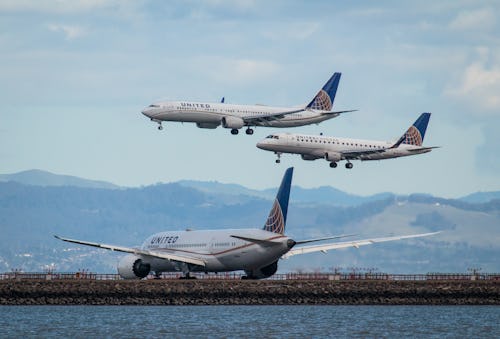
A number of U.S. airlines have co-signed a foreboding letter warning of a “catastrophic” crisis caused by the impending rollout of a new 5G spectrum. The letter, which was also signed by a few shipping companies, claims the C-band deployment “could potentially strand tens of thousands of Americans overseas.”
“Unless our major hubs are cleared to fly, the vast majority of the traveling and shipping public will essentially be grounded,” the letter — a copy of which was reviewed by Reuters — reads.
The letter was sent to FCC Chairwoman Jessica Rosenworcel, FAA Administrator Steve Dickson, Pete Buttigieg, and White House National Economic Council director Brian Deese.
The C-band rollout has been a subject of intense debate amongst major airline companies, regulatory agencies, and cell service carriers. It’s already been delayed more than once; the C-band frequencies were originally meant to be operational on December 5. And no one even knows whether or not the new 5G frequencies are a real threat to airplane functionality.
Buffer zones —
Verizon and AT&T — who jointly own the new 5G spectrum — have already made some concessions to appease wary airline executives. The companies agreed to create buffer zones around 50 airports during the first six months of deployment.
Major airlines want these buffer zones to be better-defined. They’d like the zones to extend with a radius of at least two miles around major airport runways, with the potential for them to shrink once the FAA has completed more research on the matter.
United, in particular, has been fighting tooth and nail against the 5G rollout. The airline says 787s, 777s, 737s, and some regional aircraft will be affected by C-band frequencies. This week the company claimed more than 15,000 flights could be affected annually by the new 5G spectrum, impacting up to 1.25 million passengers.
So… what now? —
As it stands right now, we have Verizon and AT&T on one side of the debate and basically every major airline on the other. It’s a battle of gods, as far as corporations go.
The evidence that C-band frequencies will actually ground this many flights is middling at best. As The Verge notes, there’s actually 220Mhz between C-band and the frequencies generally used by aircraft equipment.
By Monday, the FAA had already cleared nearly half of all U.S. commercial aircraft to fly, even those landing nearest the new 5G equipment. It said at the time that it expected to have even more clearances ready for today’s deployment.
What this really boils down to, of course, is money. AT&T and Verizon spent $65 billion on the rights to use C-band for their 5G traffic. And airlines don’t want any more liability than they already have. When there’s this much money on the line, you can bet all parties involved will be fighting for the last word with all they’ve got.







